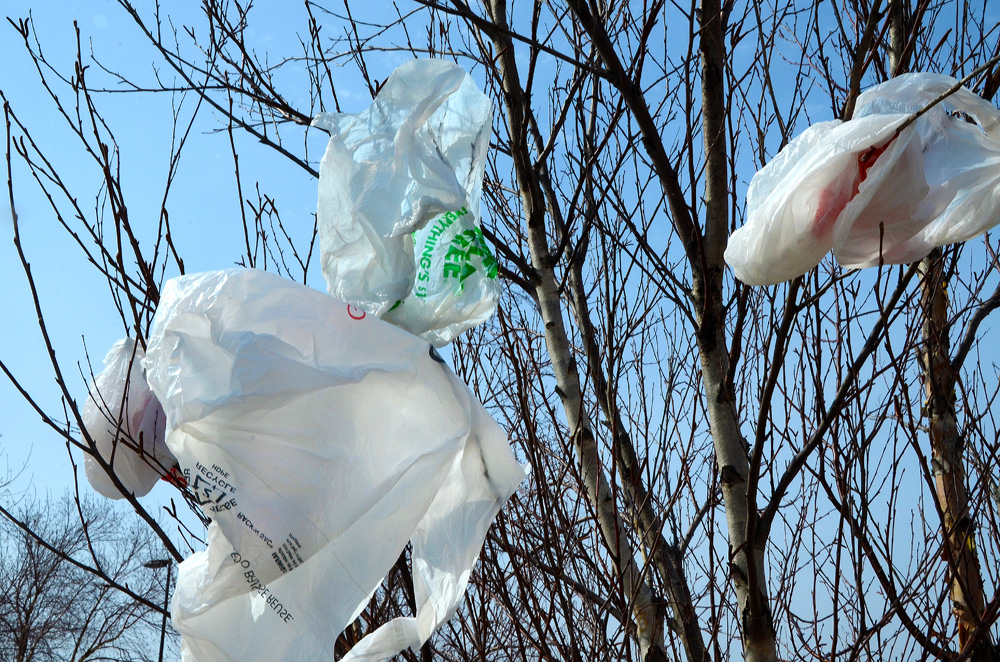Confronting Plastic Pollution One Bag at a Time
By Marcia Anderson
Plastic bags are inexpensive, lightweight, durable and made of plastic, which does not readily biodegrade. Much of the plastic ever made still exists. Worldwide, as many as one trillion plastic bags are used each year and less than 5 percent of plastic is recycled. In the United States, according to the EPA, we use over 380 billion plastic bags and wraps yearly, requiring 12 million barrels of oil to create.
The big problem with many of these plastic bags is that we are not disposing of them properly. You can find them littering parks, roadsides, and parking lots. When it rains, storm sewers, sewer overflows, and drainage outflows transport litter to rivers which eventually carry the plastic into lakes or oceans. In addition, plastic collects water and can become a breeding site for mosquitoes and other pests. Did you know that it takes just one bottle cap of water for mosquitoes to multiply?
Living on the Atlantic coast, I have become accustomed to plastic bag ordinances. From Washington, DC, to Portland, Maine and numerous coastal communities beyond, many understand the importance of keeping plastic bags from reaching the shore. On the West Coast, Portland, Seattle as well as Los Angeles, San Francisco, and 120 other California towns have plastic bag ordinances. In Texas, 11 communities, like Austin and Brownsville, ban single-use grocery bags. In addition, many mid-western communities have also followed suit.
When I am in New Jersey, I bring reusable bags to the market. So, as creature of habit, I do the same when I visit other communities further from the shore. One of the communities I regularly visit does not have a bag ordinance and it often seems like I am the only one who is using reusable grocery bags. Yet, I recently have seen glimmers of hope.
Some stores now have signs in their parking lot: “Did you remember your reusable bags?” A few weeks ago, I noticed that some local people were catching on and bringing their reusable bags shopping – just like me. I later found that the local middle school had an Earth Day program to educate students on the dangers plastic bags pose to wildlife. The PTA asked a local store if it would donate reusable bags for each student to bring home. The store was happy to comply and parents are beginning to use them.
Why is it important to keep plastic bags away from our coasts and waterways? In the ocean, turtles often mistake plastic bags for jellyfish and eat them. The bags do not pass through the turtles’ digestive system and block their intestines. They die of starvation. Studies on dead turtles have found that more than 50 percent have plastic in their stomachs. Similarly, seabirds, fish and other marine critters also mistake pieces of plastic for food, or become entangled in plastic, leading to exhaustion, starvation and eventual death. And plastic bags are just as much a hazard for wildlife in interior lakes and waterways.
Are there other reasons to focus on the plastic bags? Most people do not realize that plastic pollution also costs them in the taxes they pay. Some urban communities spend over $1 million annually to remove litter, and plastic bags are a big part of the problem. So, do you reuse your plastic bags or just throw them away? More and more communities are charging 5-25 cents per plastic bag with some shore communities charging as much as $1 per bag. So when the clerk asks, “Do you want a bag?” you should seriously consider whether you really need it.
To learn more, visit: EPA’s Trash Free Waters or NOAA’s Ten Things You Should Know About Marine Debris and the NOAA guide to marine debris and turning the tide on trash.
About the Author: Marcia is with EPA’s Center of Expertise for School IPM in Dallas, Texas. She holds a PhD in Environmental Management from Montclair State University along with degrees in Biology, Environmental Design, Landscape Architecture, and Instruction and Curriculum. Marcia was formerly with the EPA Region 2 Pesticides Program and has been a professor of Earth and Environmental Studies, Geology, and Oceanography at several universities.








